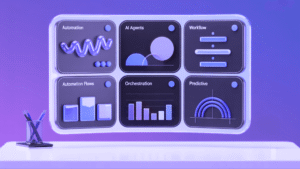Building a clear picture of your campaign’s impact requires more than surface-level metrics. While engagement rates and media coverage tell part of the story, they don’t capture how your audience genuinely connects with your brand. Sentiment analysis helps bridge this gap by revealing the emotions and reactions behind the numbers.
Let me walk you through how sentiment analysis deepens our understanding of public perception, tackle some common hurdles, and show you practical ways to combine it with your existing metrics for actionable insights.
What is sentiment analysis?
Sentiment analysis is a systematic way to understand the emotions and attitudes expressed in written content about your brand.
It uncovers the emotional resonance behind what people write about your brand. By examining news coverage, social conversations, and online discussions, we can understand whether public responses trend positive, negative, or neutral.
This depth of insight reveals nuances that standard metrics often can’t capture. In public relations, sentiment analysis is a crucial tool for keeping a pulse on brand health.
ALSO READ: Why Monitoring Your Brand’s Social Media Sentiment Matters
Read the room in real-time
Public sentiment can shift in an instant. Take Youthforia’s 2024 foundation launch – their darkest shade “600” sparked immediate criticism for looking more like paint than a natural skin tone. Sentiment analysis helps brands catch and address such missteps before they escalate.
Assess campaign impact
Sentiment analysis shows how people truly respond to your campaign. Take Nike’s “Move to Zero” sustainability initiative – by analyzing comments, they could see if people viewed it as genuine commitment or just marketing. When people used words like “committed” and “inspiring,” it signaled trust. But terms like “performative” and “skeptical” warned Nike when their message wasn’t landing, letting them adjust their approach before losing audience trust.
Refine your messaging
Tracking public sentiment over time helps you adjust messaging to connect more effectively with your audience. Positive sentiment can reinforce specific messages, while negative sentiment points out areas needing more clarity or sensitivity. For example, Dove’s 2024 “Keep Beauty Real” campaign pledged not to use AI to replace real women in its ads, showing a strong grasp of public demand for authenticity.
Common challenges in sentiment analysis (and how to overcome them)
As with any tool, sentiment analysis comes with challenges to keep in mind. Here are a few common ones and ways to tackle them:
- Sarcasm and nuance: Automated tools can miss sarcasm or subtle language, skewing results. Balancing automation with periodic human reviews helps catch these nuances.
- Cultural differences: Words can carry different meanings across cultures, impacting sentiment analysis. Adjusting settings to fit your audience’s language and testing phrases with a sample group can improve accuracy.
- Balancing speed and accuracy: Real-time sentiment analysis is crucial in a crisis but shouldn’t come at the cost of accuracy. Automated tools can deliver quick insights, but regular checks help ensure reliability.
How sentiment analysis works with other PR metrics
Sentiment analysis becomes even more valuable when it’s paired with other PR metrics, such as:
Media reach
When you pair sentiment with reach, you see both how people feel and how widely those feelings spread. Strong positive sentiment with high reach means your brand message is resonating well. But when negative sentiment reaches many people, you know it’s time to act fast.
Engagement rates
High engagement on a sentiment-driven post can signal that the content is striking a nerve—whether it’s positive or negative. This helps you understand what’s resonating or where there may be friction.
Share of voice
Share of voice paired with sentiment gives you the full competitive picture. While high visibility and positive sentiment signal brand strength, negative reactions could reveal where competitors have an edge – even with less coverage.
How Media Meter adds depth to sentiment analysis
Media Meter takes sentiment analysis a step further, going beyond the basic positive, negative, or neutral results to give you insights that are more meaningful and practical. Here’s how it stands out and can help you get a clearer view of how your brand is perceived:
- Nuanced sentiment and tonality
Media Meter captures subtleties like “cautiously optimistic” or “mildly critical,” giving you a richer sense of audience reactions.
- Themed sentiment analysis
Media Meter categorizes feedback by theme. For instance, positive sentiment may cluster around innovation, while negative feedback may focus on pricing. This breakdown lets you see which parts of your messaging resonate and which may need adjusting.
Moving forward
Sentiment analysis provides PR teams with valuable insight into public perception, guiding responses to challenges and strengthening brand reputation. Combining sentiment data with other PR metrics gives a more complete view of how efforts resonate and what drives audience engagement.Media Meter makes it easy to track sentiment and understand the tone of conversations around your brand. Explore our sample reports to see how we can support your sentiment analysis goals. Contact us to learn more.
-
Richelle is a writer, researcher, and a content marketing specialist at Media Meter Inc., turning complex media data into compelling narratives. With a background in research and data analytics, she combines attention to detail with a strategic approach to create content that resonates and drives results, helping brands forge meaningful connections with their audiences.
View all posts




